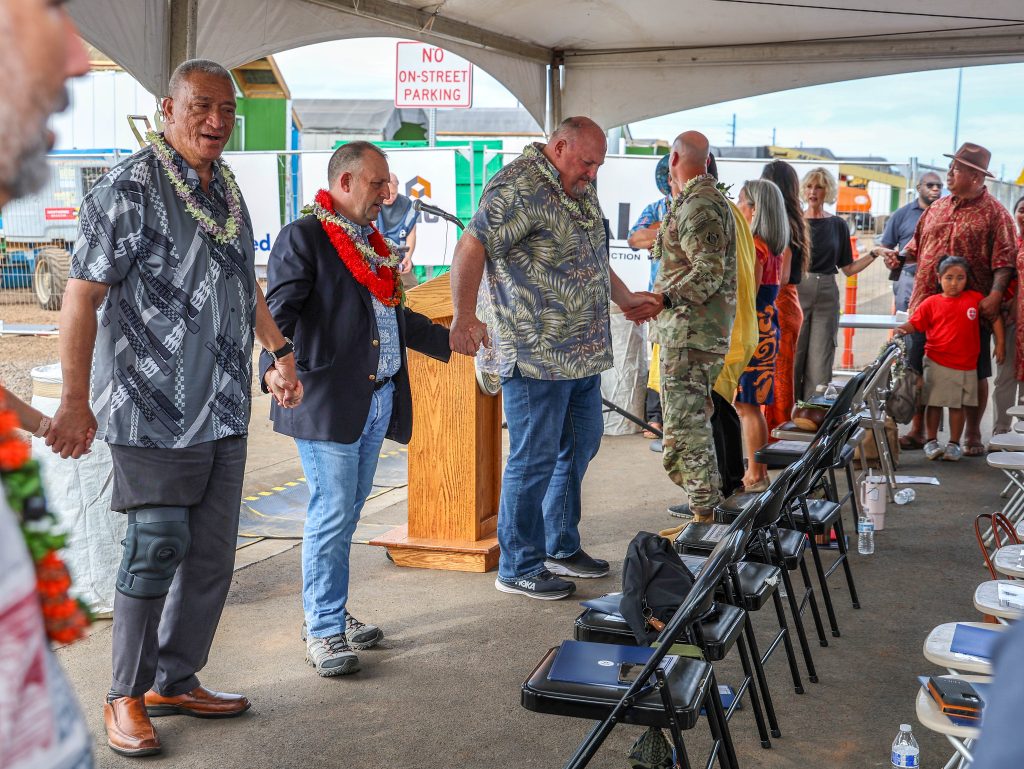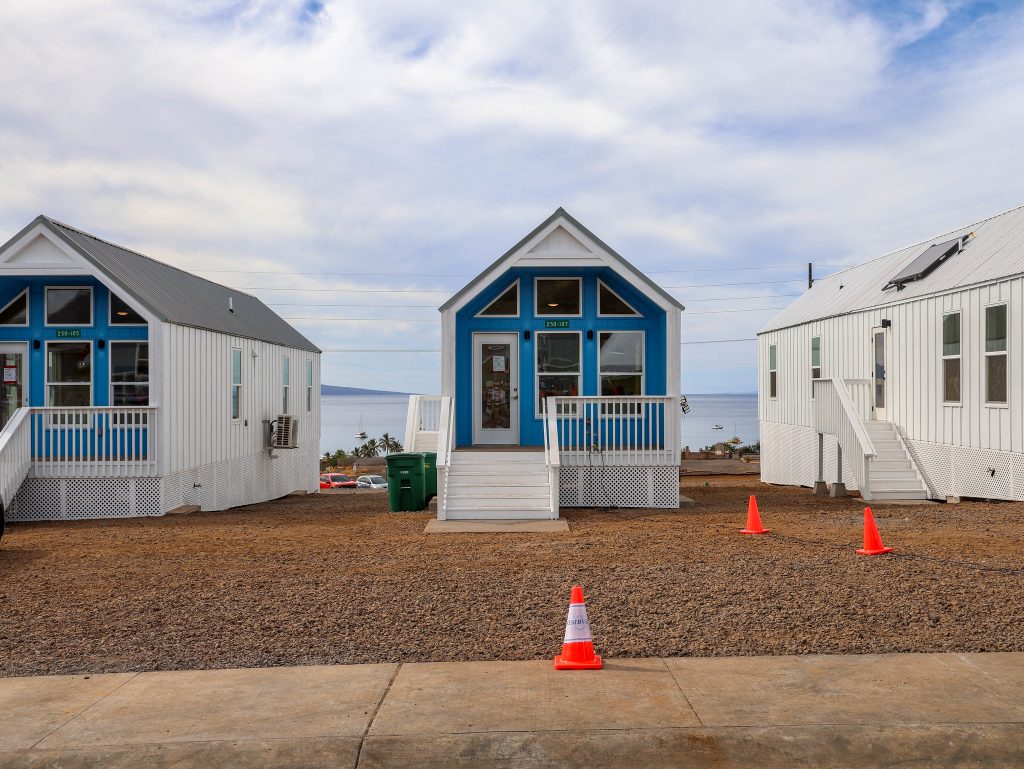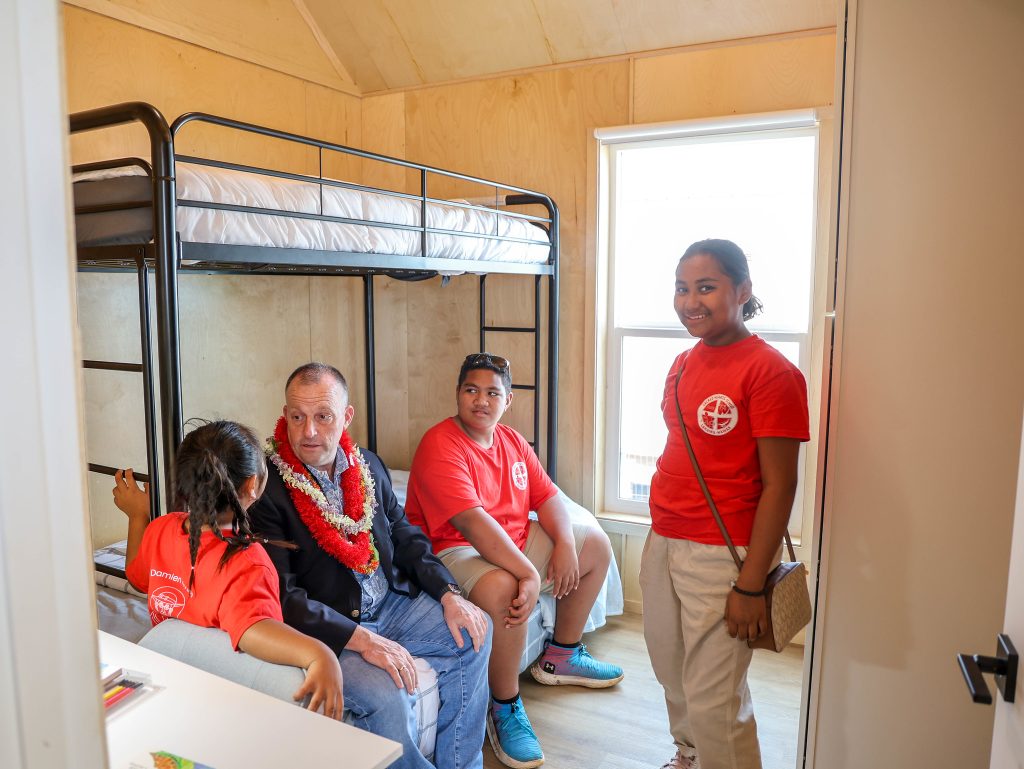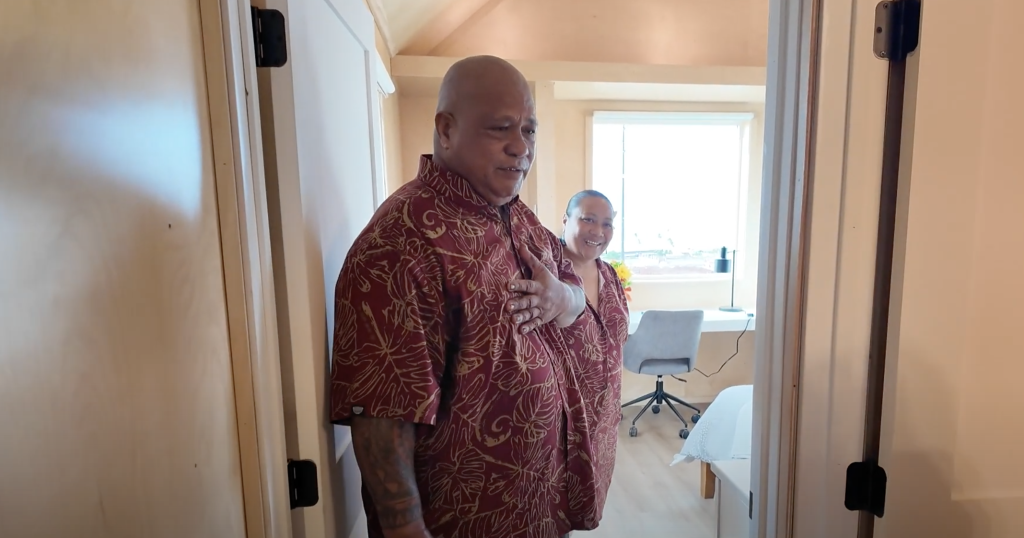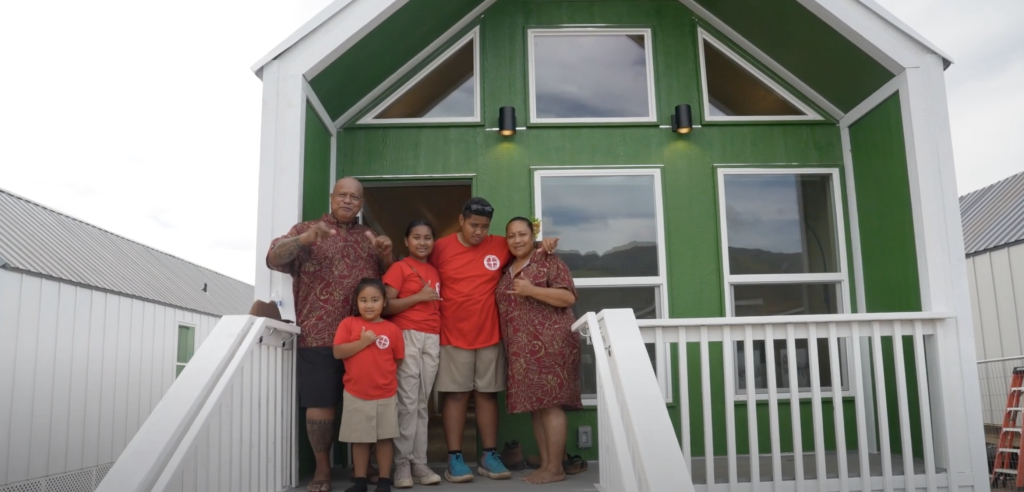FEMA’s Kilohana temporary housing in Lahaina welcomes its first wildfire survivors
Lafaele and Ane Folaumoeloa and their three children became the first tenants of the Federal Emergency Management Agency’s Kilohana Group Housing on Friday. The 11-year-old boy and girl and their 5-year-old younger sister are moving into a three bedroom modular unit, marking the first time in more than a year that they will have a kitchen and room outside to ride their bikes.
Once complete, Kilohana will become a temporary haven for up to 167 individuals and families – a Lahaina location where wildfire survivors can plan for the future.
Ane says she’s grateful. The help they received from FEMA and the American Red Cross, gave the family a temporary refuge in Lahaina, close to their former home. Now, they are ready to move ahead.
Their ordeal began Aug. 8, 2023, the day of the wildfires. Fierce winds left them without power or cell service. The couple and their children decided to leave their Lahaina rental on Komo Mai Street to do some shopping in Kahului. But on the return drive, a barricade stopped them from entering Lahaina at Hōkiokio Place. They had to turn back to Kahului.
“We couldn’t see anything,” Lafaele recalled. “The smoke started to come up top of the sky, over the whole of Lahaina.”
By then, thousands of Lahaina residents were evacuating. Traffic was bumper to bumper. When the family reached Kahului, they searched for a hotel room but could not find one. They sheltered at an uncle’s home, thinking they would return to Lahaina the next day.
But at 3 a.m., Ane said she received a text message from her landlord, a firefighter who had stayed behind. It read: “Don’t go home. There is nothing there. All Lahaina down.”
A few days later, the family moved closer to their previous home. They went to the Papakea Resort in Kāʻanapali, a hotel taking in survivors and later participating in the emergency shelter program managed by the state and the American Red Cross.
After the Red Cross program ended, FEMA moved the family into a nearby hotel, the Royal Lahaina, as part of its Direct Federal Assistance sheltering program.
Although they were relieved to have the continued shelter and proximity to the children’s school, the Sacred Heart temporary school, Ane’s children longed for a place where they could ride their bikes again.
Kilohana is designed to give them space to get back to normal while they find their permanent home.




